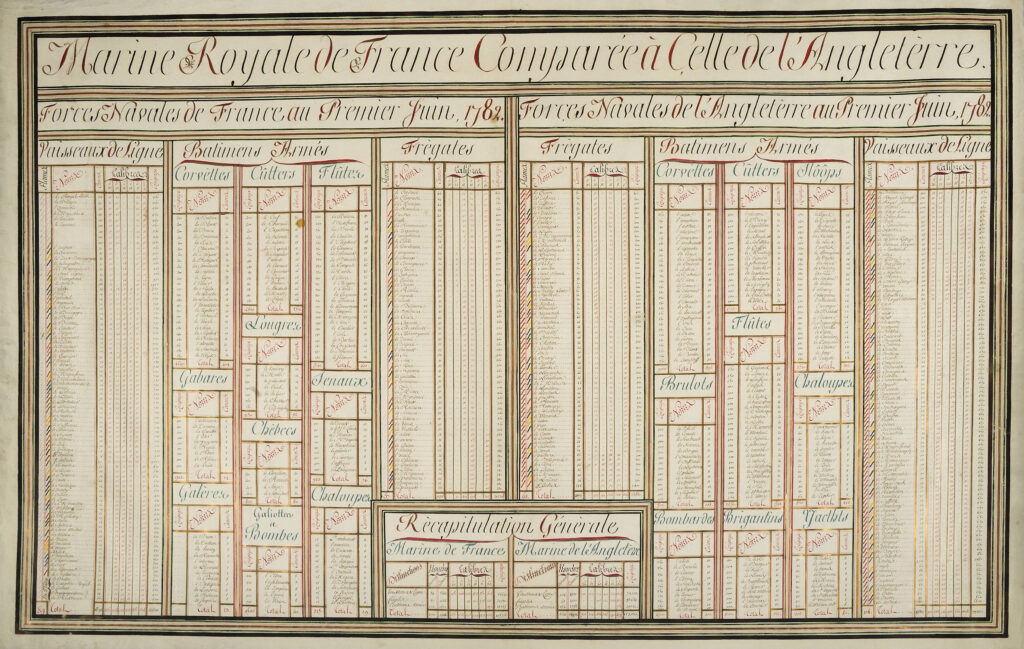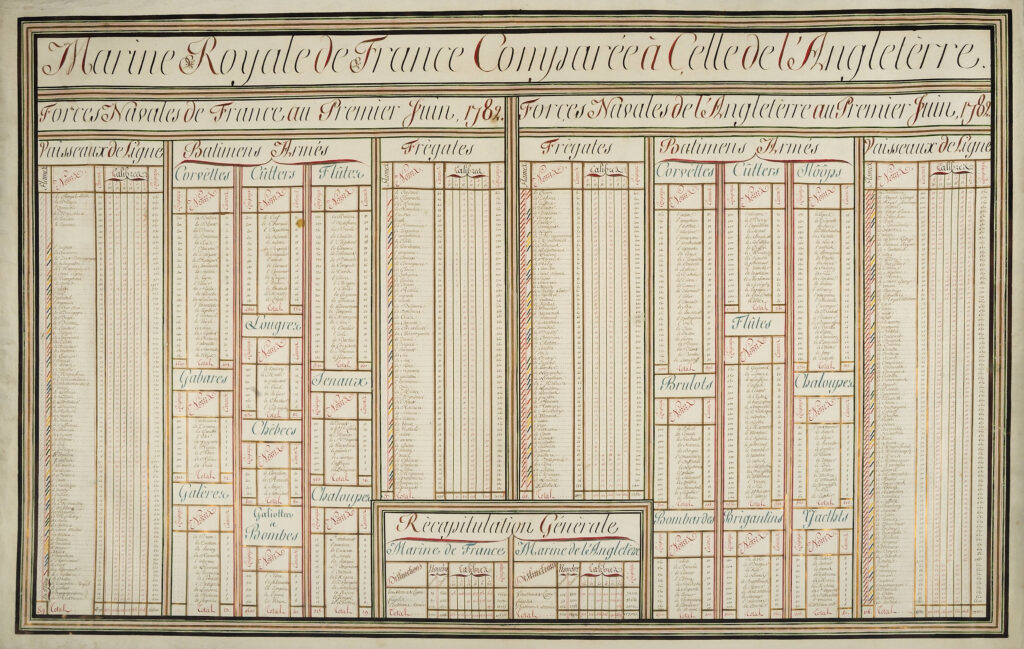Learning Goal
During the Revolutionary War at sea, America’s new Continental Navy, aided by allies from the French Navy, faced off against the Royal Navy of Great Britain. This lesson compares the size and relative force of each navy’s fleet and the combined force of the American and French navies in proportion to the three major classes of vessels within each fleet using line plots.
Essential Questions and Lesson Objectives
Students will make a line plot to display a data set of measurements in fractions of a unit (1/2, 1/4, 1/8), and use operations on fractions to solve problems involving information presented in line plots using source information about the French, British, and American navies during the American Revolution.
Lesson

1. Using the documents Marine Royale de France Comparee a celle d’ Angleterre (translated as: Royal Navy of France Compared to that of England) and Vessels of the Continental Navy, find
- the total number of vessels for each of the three navies, and
- the total number of each major category of vessels (Ships of the Line or Vaisseaux de Ligne, Frigates or Fregates, and all other armed ships) for each of the three navies.
See below for a key to the correct number of vessels and category of ships, per navy.
Total Number of Vessels
France: 270
Great Britain: 328
Continental Navy: 57
Total Ships of the Line
France: 89
Great Britain: 104
Continental Navy: 1
Total Frigates
France: 57
Great Britain: 68
Continental Navy: 21
Total Other Armed Ships
France: 124
Great Britain: 156
Continental Navy: 35
2. Determine the fraction or percentage of each fleet according to type of vessel. See below for a key to the breakdown of percentages.
Ships of the Line
France: 33%
Great Britain: 32%
Continental Navy: 2%
Frigates
France: 21%
Great Britain: 21%
Continental Navy: 37%
Other Armed Ships
France: 46%
Great Britain: 47%
Continental Navy: 61%
3. Create a line graph showing the total fraction or percent in each vessel category for each country:
- the x-axis should measure the three categories of vessels — Ships of the Line, Frigates, and all other Armed Ships.
- the y-axis should be scaled to either one (if showing fractions or amounts) or 100% (if showing percentage amounts), with one or 100% representing all the vessels in each respective nation’s fleet.
- use a different color to represent each nation.
Discussion Questions
1. What do these breakdowns reveal about the power of each country’s navy?
2. How strong is the Continental Navy compared to the navies of the French and British? What does this suggest about how the Continental Navy fought at sea?
